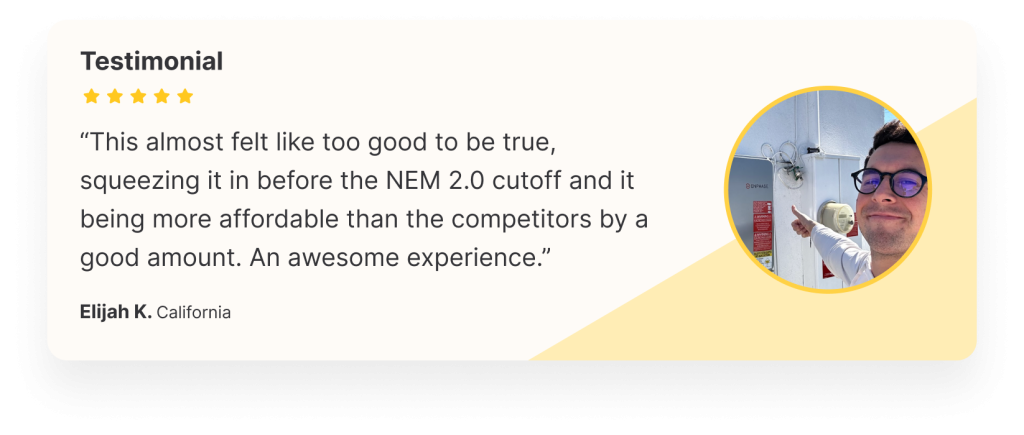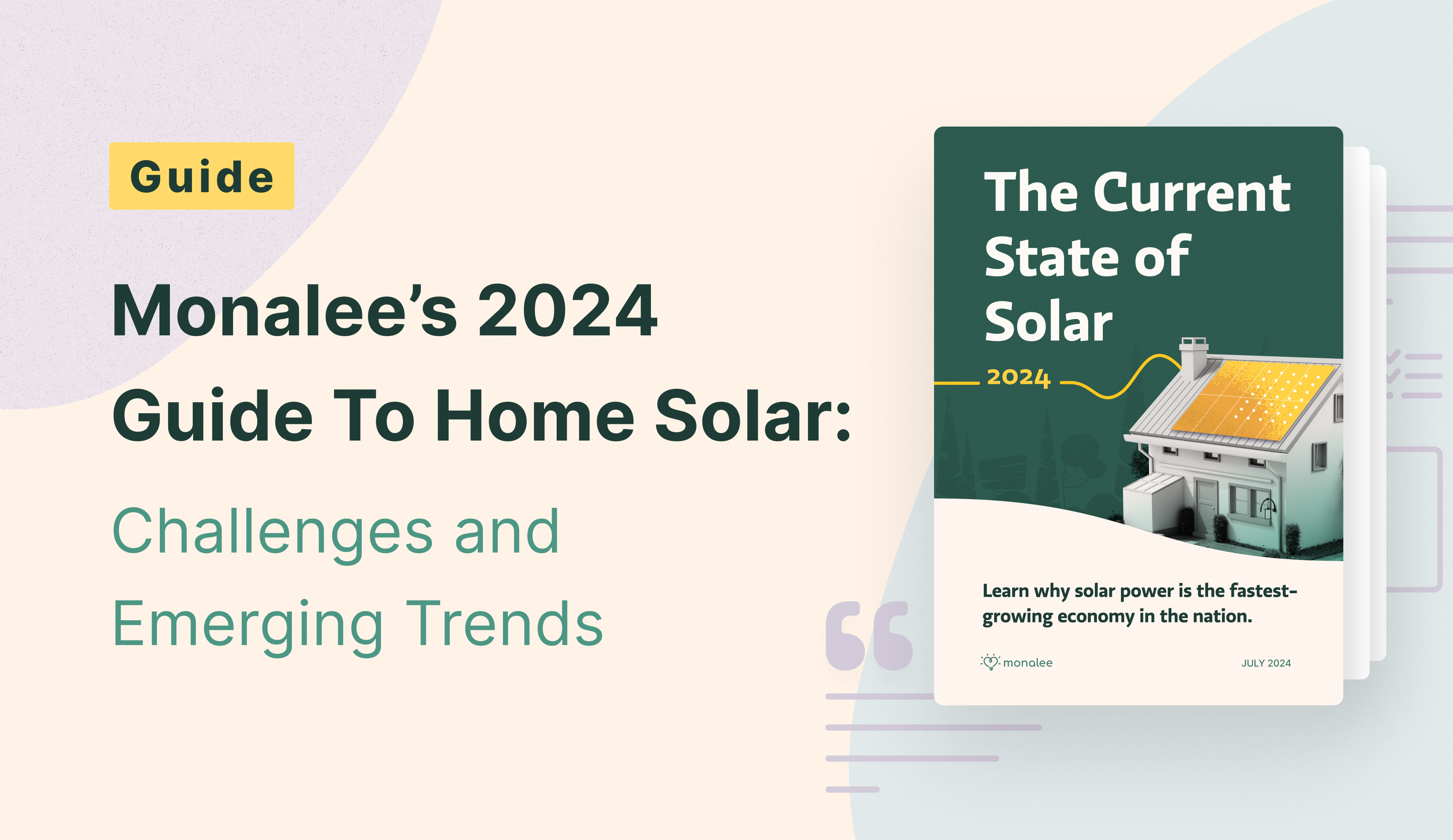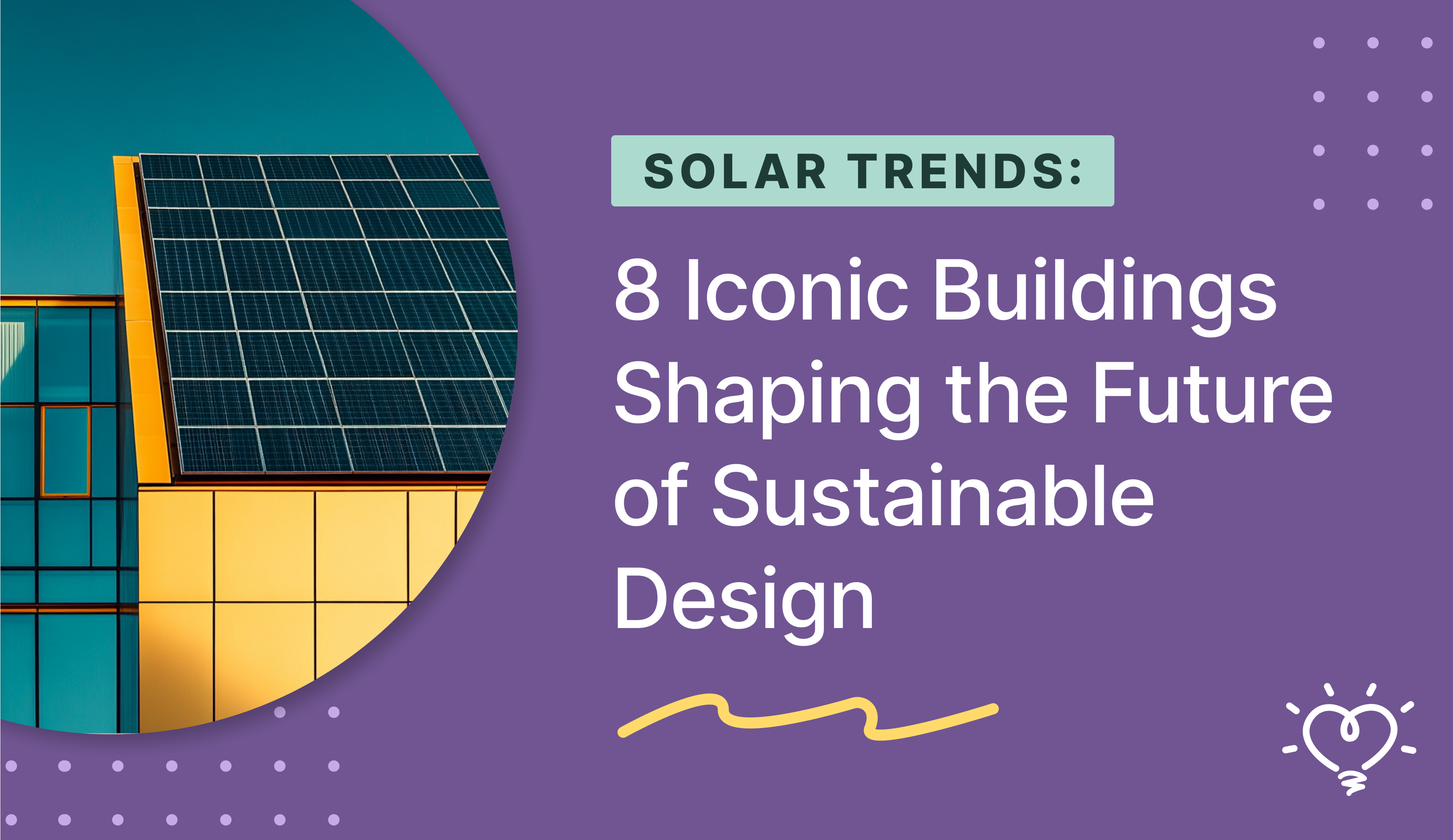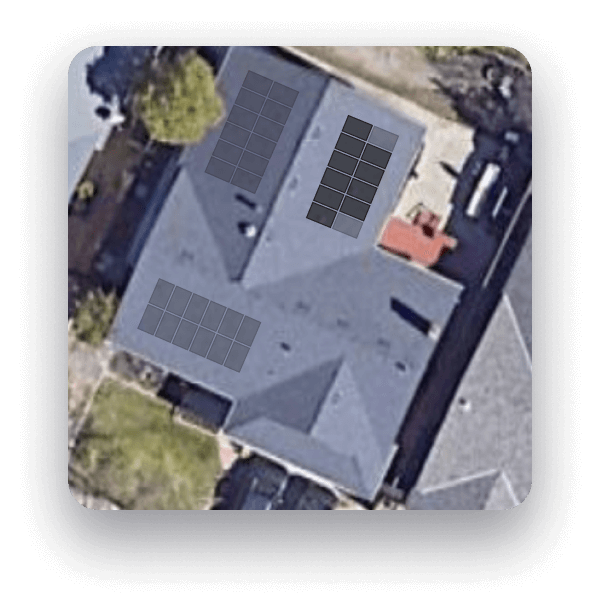Here's everything you need to know about going solar in 2024. Download our full guide for free.
Even with the recent foreclosures of several big solar companies, investing in renewable energy is more crucial than ever. Homes with solar panels increase in value by an average of 4.1-percent, and ultimately pay for themselves after a few years.
At the same time, an uncertain market is contributing to many homeowners holding off on going solar. High interest rates on solar loans and equipment shortages are other challenges facing the industry.

Overview of Monalee’s 2024 Guide to Home Solar
Solar power is currently the fastest-growing economy in the nation and the fastest-growing renewable energy source. Innovations in solar panel design are increasing efficiency, while AI integrations are cutting soft-costs significantly, resulting in lower installation costs.
In our 2024 guide to home solar, we’ll break down a few hurdles facing solar companies today and what innovations and trends homeowners can look forward to in the coming years.
Current Challenges
Homeowners are navigating an uncertain housing market and rising electricity rates. A few of these challenges include:
1. Net metering changes
Net metering gives homeowners the ability to sell excess energy and recoup that energy at a later date. For this reason, net metering is sometimes referred to as ‘solar buyback,’ or ‘net billing’ and net energy metering (NEM). In the past year alone, however, many states have either changed their metering value system or eliminated the programs altogether.
California has had significant net metering changes that have made solar less lucrative for homeowners. Ahead of the NEM 3.0 rollout, there was a surge of installations in an effort to make the cutoff but since then, volume has declined.

2. Inflation and high soft costs
Solar is an industry where most things are done offline, as there hasn’t been good software or technology leaders who have digitized the process. So, while installation costs may be decreasing, soft costs still account for about 75% of the total cost of going solar.
From site surveys to permitting to final inspections, there’s a lot that happens before a solar system can start generating power and saving homeowners money.

3. General distrust in the industry
As reported by Time, solar salespeople haven’t always been the most forthright in their approach. Many homeowners would receive a knock on the door followed by a pitch to go solar. These reps typically go door-to-door selling homeowners on the idea of residential solar.
Salespeople tend to be pushy, self-motivated, and use bait-and switch tactics. It’s off-putting and makes many homeowners hesitant to move forward.

Download Monalee’s 2024 Guide to Home Solar Today!
Monalee’s 2024 Guide to Home Solar offers an expert view into the current challenges facing the industry as well as emerging trends that will further innovate the solar space. No matter how you look at it, solar energy is the future and investing in solar panels and EV storage for your home is a smart investment and one that will save you thousands of dollars in the long-run.
Download the full guide!


























